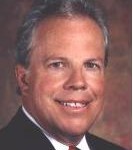Goldman Sachs, Synthetic CDOs, and … Fraud?
By Bill Conerly,
Conerly Consulting, Businomics,
The Goldman Sachs fraud charges certainly make the company look sleazy, but one key fact seems not to be discussed too much: the securities involved were synthetic CDOs, and I think that makes a big difference. The plan for this article is
1. Explain what a CDO is
2. Explain what is different about a synthetic CDO
3. Explain how that matters for the fraud allegation
What is a CDO?
CDO stands for collateralized debt obligation. The CDO is a separate legal entity, like a little corporation. It borrows money. That debt is backed by collateral. The collateral is purchased with the money that was borrowed. Although most any kind of asset can be purchased, the most common assets were mortgage backed securities.
So the CDO had these mortgage backed securities as assets, and the money it originally borrowed as liabilities. If the MBS paid off as scheduled, the CDO would be able to honor its debts. However, if the MBS did not pay off, then the CDO would go bankrupt, and the folks who lent to the entity would lose their money.
(By the way, here’s what a mortgage backed security is, for those who want to brush up on basic finance concepts. Think of a mortgage as a collection of payment coupons. A thirty year mortgage consists of 360 coupons (30 years times 12 payments per year). Take 1000 mortgages and throw all the coupons (that would be 360,000) into a bowl. Then sort the coupons by date. Now gather up all the coupons for payments in the first 3 months and offer this collection of coupons for sale. That is a mortgage-backed security. Investors can choose whether they want near-term money, like the first three months of payments, or late money, like the last 10 years of payments. Along the way various rules can be set up to deal with early payments and defaults. The resulting collections of coupons, with their associated rules for what happens in different scenarios, are mortgage-backed securities.)
What is a Synthetic CDO?
A synthetic CDO has all the profit and loss potential of a CDO, but without the mess that comes from actually having assets and debts. The people who buy a CDO know that their income depends on the underlying mortgage holders making their payments on time. They will lose money if the homeowners with mortgages cannot make their payments. So a synthetic CDO simply consists of contracts between the two sets of parties, one set wanting to bet that the CDO pays off as scheduled, the other set betting that the underlying mortgages will fail. There are no real assets in a synthetic CDO. Instead, it consists of Credit Default Swaps (CDS). A CDS is simply a bet on whether a real CDO with a certain pool of MBS as assets would fail or not. (It’s actually a bit more complicated, with the amount of payment from one party to the other depending on the portion of the MBS that pay off or fail.)
In a regular CDO, the “long” side of the transaction consists of the investors buying the CDO, who ultimately are funding the mortgages. The “short” side are the borrowers—homeowners across the country. In a synthetic CDO, the long side are speculators betting that the mortgages pay off; the short side are other speculators betting that the mortgages do not pay off.
Why the Synthetic CDO Matters in the Goldman Sachs Case
The synthetic CDO makes a difference, I think. The people who took the long side of the trade knew they were getting a synthetic CDO. That is, they knew that the other side of the transaction consisted not of homeowners with mortgages, but rather other sophisticated parties. Those sophisticated parties would only take the short side of the trade if they thought mortgages would not be paid off. In a synthetic CDO, the issuer (Goldman) has to work with both sides of the transaction, both the longs and the shorts. There is no expectation that the underlying assets are real mortgages. In fact, my underlying expectation would have been that the underlying assets make a good horse race; that they could go either way, and thus we’d have a difference of opinion. If the underlying MBSs were all derived from pristine good-as-gold mortgages, then who would take the short side in a synthetic CDO?
It seems to me that Goldman’s failure to talk about Paulson is a trivial issue. The long side of the transaction had to know that there was a short side. If the longs wanted to know who was taking the short side, they could have asked, as a condition of buying the long side. However, I might be persuaded that Goldman was in the wrong if it proves true that in one of their representations they said the MBS were selected by one party (ACA) when in fact they were selected by a different party (Paulson). However, whether this would have been material to the longs in the deal is hard to say, and I confess that I’m skeptical.
One last comment on the fraud allegation: if this is the best case that the SEC has, then it doesn’t have very much.
Business implications: if you enter into a transaction to buy, assume that the other party thinks he will be better off selling. If you enter into a transaction to sell, assume that the other party thinks he will be better off buying. If a salesman tells you this is a great buy, assume that his statement has zero information content. If you don’t understand it, don’t buy it.
Disclosure: I own stock in Goldman Sachs.
Disclaimer: Articles featured on Oregon Report are the creation, responsibility and opinion of the authoring individual or organization which is featured at the top of every article.


